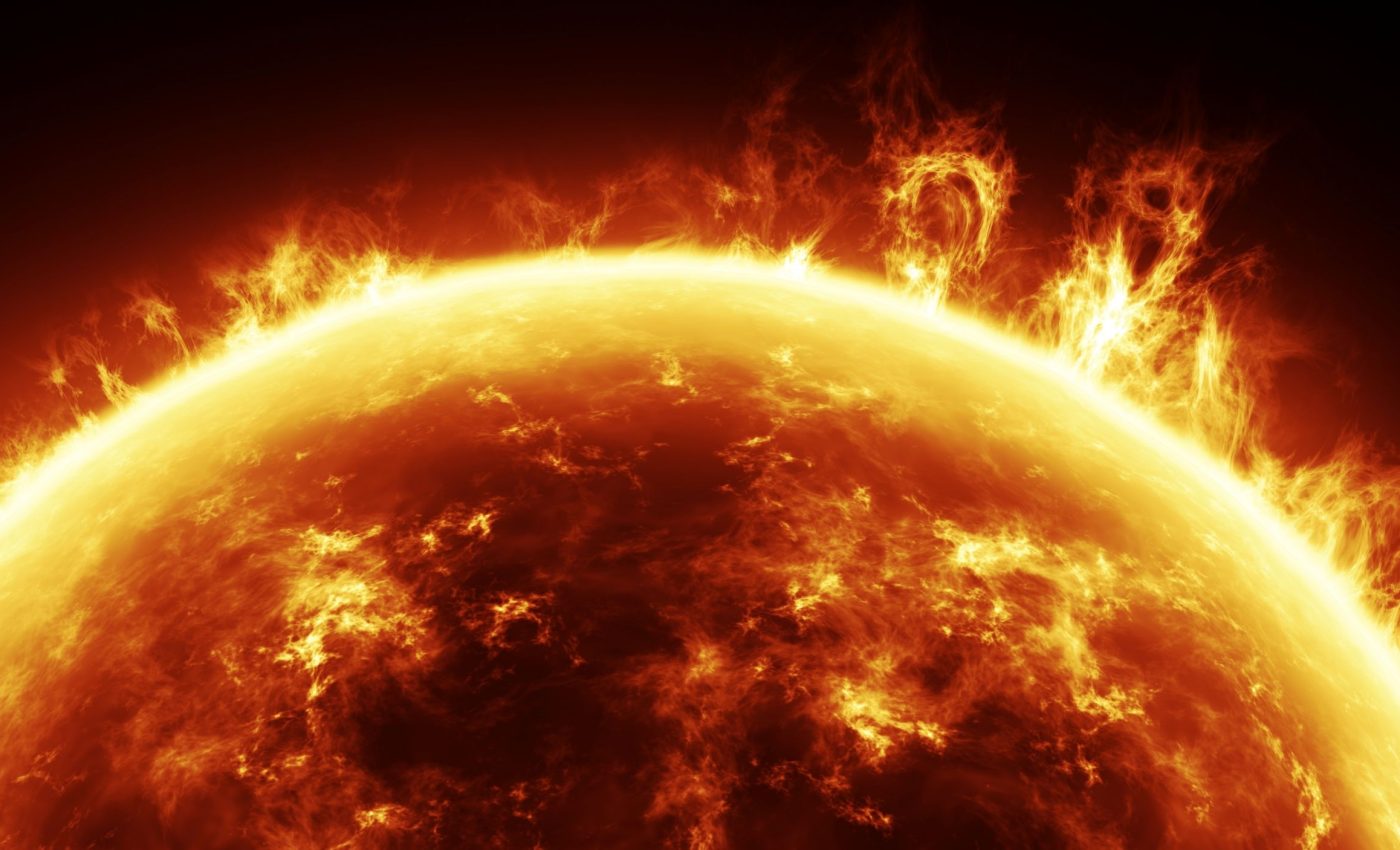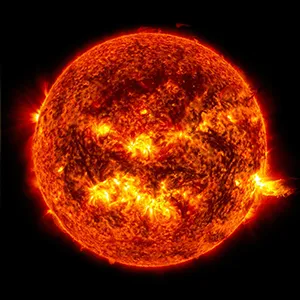
'Solar rain' falls on the Sun, and scientists have struggled for decades to explain it
The Sun has a weather pattern of its own, and one of the strangest features is the solar rain that falls in its atmosphere during flares.
However, it’s not water that rains down; it’s plasma. This state of matter is a gas so hot that atoms have lost electrons, causing them to cool into clumps that tumble back toward the surface.
Scientists have watched this coronal rain form very quickly during solar flares, then streak along magnetic arches like beads.
That speed has been hard to explain with standard models that treat the Sun’s atmosphere as having a fixed chemical mix.
Hot plasma equates to solar rain
The corona is the Sun’s outer atmosphere, a low-density, high-temperature layer that sits above the visible surface.
As flares erupt, loops fill with hot plasma, then cool through radiation until parts of the loop condense into rain.
Observations have shown that brief energy bursts can set off rain far faster than expected by steady heating. In one set of observations, reconnection and impulsive heating were linked to condensations that formed quickly.
That puzzle is exactly what Luke Fushimi Benavitz of the University of Hawaii’s Institute for Astronomy set out to solve. He used new physics packed into computer models of flare loops.
The work reframes how cooling unfolds when the plasma’s composition is allowed to change in time and space.
Moving elements create a cooling effect
A new study argues that allowing the abundances of elements such as iron, silicon, and magnesium to vary can flip the cooling rate in specific parts of a loop. When more of these elements gather near a loop top, radiation increases, temperature drops, and condensation forms.
“At present, models assume that the distribution of various elements in the corona is constant throughout space and time, which clearly isn’t the case,” said Benavitz.
That change in assumption brings the simulated rain in line with what telescopes record.
The model finds that flows during a flare can push low first ionization potential (FIP) material toward the apex of a loop. Local flow peaks in radiative loss, then sets off a runaway that produces the dense, cool blobs we call rain.
Creation of plasma solar rain
The first ionization potential effect is the observed tendency for low FIP elements to become enhanced in the corona relative to the photosphere.
A comprehensive review explains that a ponderomotive force from Alfvén waves can separate ions from neutrals in the chromosphere, altering the composition that reaches coronal heights.
During a flare, chromospheric evaporation drives heated material upward along magnetic fields and into the loop.
As that material flows, it can dilute or enrich parts of the corona with low FIP elements, changing how efficiently different segments radiate energy.
When a loop top gets even a modest enrichment in low FIP material, the radiation there increases relative to neighboring regions.
That imbalance nudges plasma toward the cooler, lower-pressure pocket, which increases density and accelerates cooling even further.
Coronal rain recorded during flares
High-resolution images have captured rain forming during flares, with plasma cool enough to condense into threads that fall back along post-flare loops.
In 2016, high-resolution observations documented rain streaming down during the cooling phase of an M-class flare.
Other data showed that short-lived energy bursts can be enough to seed condensations that later rain out.
Those results are consistent with the idea that composition and impulsive heating together can create the right conditions for rapid cooling.
Solar rain also sculpts the corona’s appearance at extreme ultraviolet wavelengths. An analysis reported fine structure and variability tied to rain, showing how small changes in temperature and density ripple across scales.

Research detects varied cooling times
The new findings add a transport equation for low FIP abundances to a radiative hydrodynamics code. It tracks how flows carry composition gradients along a loop and how those gradients feed back on radiation and temperature.
In runs with time variable abundances, condensations form naturally, even when heating is brief and intense. In runs that lock abundances to a fixed value, the same heating fails to produce rain under otherwise identical settings.
This shift matters because cooling times are often used as a stand-in for heating details that we cannot see directly.
If composition is changing under our noses, then estimates of cooling time that ignore those changes can be off by a lot.
Accuracy of elemental composition essential
Elemental composition is not just a curiosity; it tracks solar activity and links to the solar wind.
One study found that a global measure of the FIP bias rises and falls with a standard radio proxy for activity, tying composition to the cycle itself.
If models handle composition more realistically, they can better connect flare heating, loop cooling, and the timing of features like rain. That could sharpen forecasts of when and how energy moves through the corona during active periods.
Improved modeling also helps interpret spectroscopic diagnostics used by missions that now watch the Sun across many wavelengths.
Getting the composition right ensures that line intensities and derived temperatures map to the real physics rather than to an assumption baked into the code.
Research on solar rain continues
The immediate test is to compare simulated emission with spectroscopic observations during flares.
As composition changes, lines from low and high FIP elements should brighten in different places and at different times.
Rain events are especially useful because they flag where and when cooling runs away. Matching the modeled signatures of rain to real events will reveal whether the composition gradients and flow patterns in the code reflect what the Sun actually does.
Future models can also include a source term for the ponderomotive force to create the FIP effect from scratch, rather than starting with a preset gradient. That step would let researchers follow the chain from reconnection and waves to composition, cooling, condensation, and rain.
The study is published in The Astrophysical Journal.
—–
Like what you read? Subscribe to our newsletter for engaging articles, exclusive content, and the latest updates.
Check us out on EarthSnap, a free app brought to you by Eric Ralls and Earth.com.
—–













